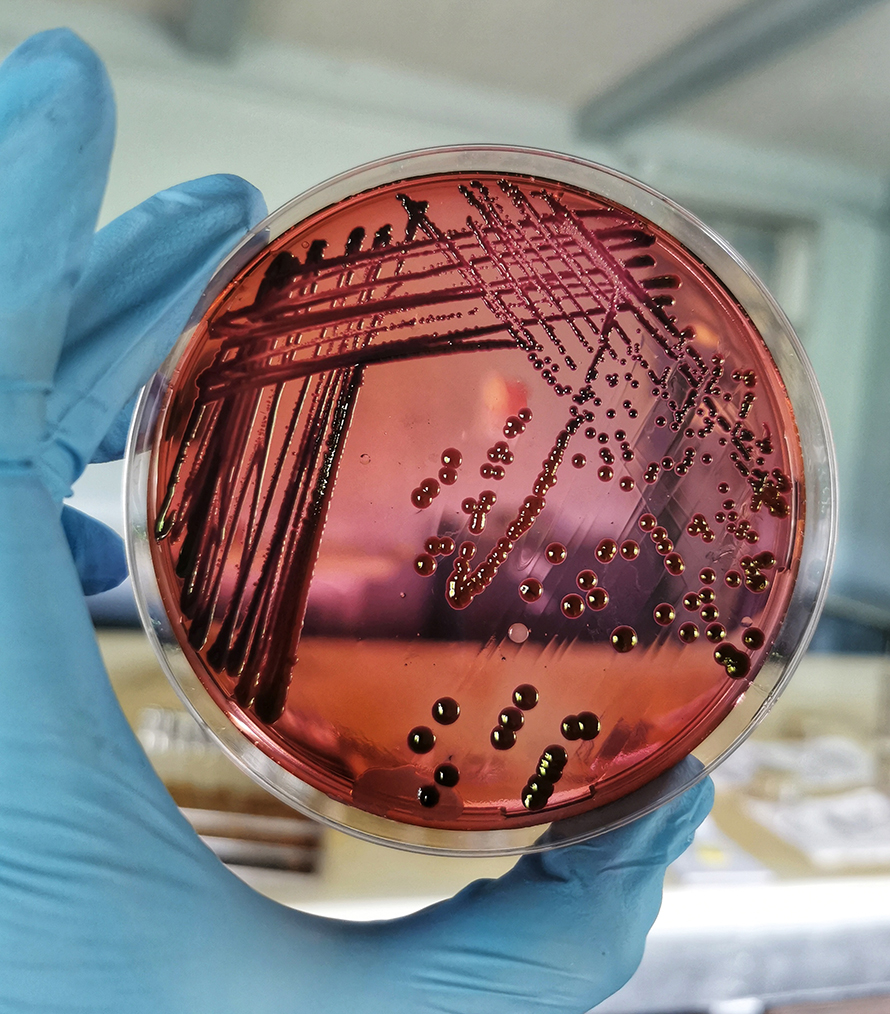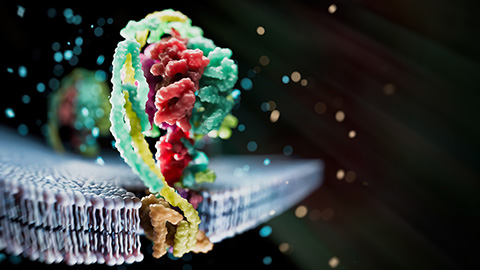Revealing what makes bacteria life-threatening
Queensland researchers have discovered that a mutation allows some E. coli bacteria to cause severe disease in people while other bacteria are harmless, a finding that could help to combat antibiotic resistance.
Professor Mark Schembri and Dr Nhu Nguyen from IMB and Associate Professor Sumaira Hasnain from Mater Research found the mutation in the cellulose making machinery of E. coli bacteria. The research was published in Nature Communications.
Professor Schembri said the mutation gives the affected E. coli bacteria the green light to spread further into the body and infect more organs, such as the liver, spleen and brain.
"Bad' bacteria can't make cellulose
“Our discovery explains why some E. coli bacteria can cause life-threatening sepsis, neonatal meningitis and urinary tract infections (UTIs), while other E. coli bacteria can live in our bodies without causing harm,” Professor Schembri said.
“The ‘good’ bacteria make cellulose and ‘bad’ bacteria can’t.”
Bacteria produce many substances on their cell surfaces that can stimulate or dampen the immune system of the host.

Inflammation and spreading through the body
“The mutations we identified stopped the E. coli making the cell-surface carbohydrate cellulose and this led to increased inflammation in the intestinal tract of the host,” Professor Schembri said.
“The result was a breakdown of the intestinal barrier, so the bacteria could spread through the body.”
In models that replicate human disease, the team showed that the inability to produce cellulose made the bacteria more virulent, so it caused more severe disease, including infection of the brain in meningitis and the bladder in UTIs.
Finding new ways to prevent infection

Associate Professor Hasnain said understanding how bacteria spread from intestinal reservoirs to the rest of the body was important in preventing infections.
“Our finding helps explain why certain types of E. coli become more dangerous and provides an explanation for the emergence of different types of highly virulent and invasive bacteria,” she said.
Professor Schembri said E. coli was the most dominant pathogen associated with bacterial antibiotic resistance.
“In 2019 alone, almost 5 million deaths worldwide were associated with bacterial antibiotic resistance, with E. coli causing more than 800,000 of these deaths,” he said.
“As the threat of superbugs that are resistant to all available antibiotics increases worldwide, finding new ways to prevent this infection pathway is critical to reduce the number of human infections.”
This article was republished from the University of Queensland website. Read the original here.
Enjoy reading ASBMB Today?
Become a member to receive the print edition four times a year and the digital edition monthly.
Learn moreGet the latest from ASBMB Today
Enter your email address, and we’ll send you a weekly email with recent articles, interviews and more.
Latest in Science
Science highlights or most popular articles

Gut microbes hijack cancer pathway in high-fat diets
Researchers at the Feinstein Institutes for Medical Research found that a high-fat diet increases ammonia-producing bacteria in the gut microbiome of mice, which in turn disrupts TGF-β signaling and promotes colorectal cancer.

Mapping fentanyl’s cellular footprint
Using a new imaging method, researchers at State University of New York at Buffalo traced fentanyl’s effects inside brain immune cells, revealing how the drug alters lipid droplets, pointing to new paths for addiction diagnostics.

Designing life’s building blocks with AI
Tanja Kortemme, a professor at the University of California, San Francisco, will discuss her research using computational biology to engineer proteins at the 2026 ASBMB Annual Meeting.

Cholesterol as a novel biomarker for Fragile X syndrome
Researchers in Quebec identified lower levels of a brain cholesterol metabolite, 24-hydroxycholesterol, in patients with fragile X syndrome, a finding that could provide a simple blood-based biomarker for understanding and managing the condition.

How lipid metabolism shapes sperm development
Researchers at Hokkaido University identify the enzyme behind a key lipid in sperm development. The findings reveal how seminolipids shape sperm formation and may inform future diagnostics and treatments for male infertility.

Mass spec method captures proteins in native membranes
Yale scientists developed a mass spec protocol that keeps proteins in their native environment, detects intact protein complexes and tracks drug binding, offering a clearer view of membrane biology.

